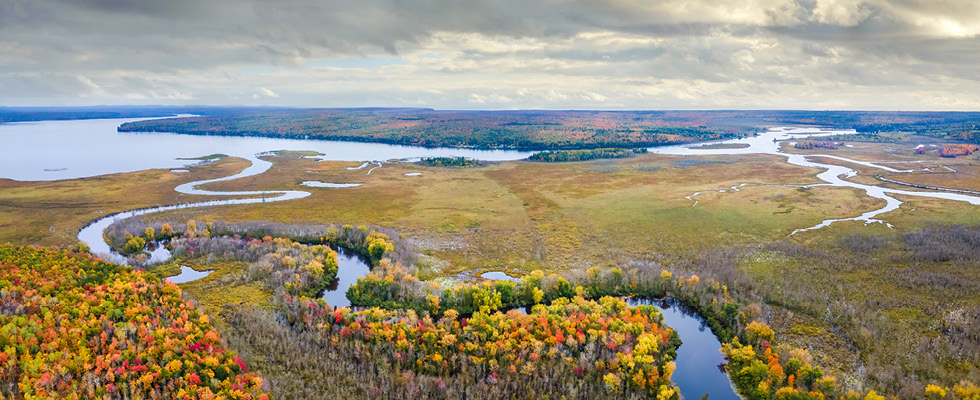
As the demand for energy and a diversity of energy sources and types continues to grow, and with the Energy Information Administration and other energy forecasts showing demand growth well into the future, it is vital to protect existing sources, supply lines and other infrastructure necessary to deliver energy where and when it is needed. At the same time, environmental protection is a parallel priority that most people agree upon.
In late 2018, the state of Michigan and Enbridge Energy leaders announced a major infrastructure project agreement that aims to ensure the region’s energy demands will be met while also protecting the Great Lakes now and in the future. A coalition of Enbridge Line 5 pipeline supporters — whose leaders include the Michigan Propane Gas Association (MPGA) — successfully lobbied Michigan legislators and regulators to win legislation that created the Mackinac Straits Corridor Authority and to build the Great Lakes Tunnel. It was a major policy achievement for the pipeline supporters, and the Great Lakes Tunnel project will stand as a major infrastructure asset as a result.
The project is uniquely structured. Solely funded by Enbridge, the company is investing more than $500 million to build the Great Lakes Tunnel to house Line 5 deep under the Straits, meaning it won’t cost taxpayer money. The project will take Line 5 out of the Straits of Mackinac and place it in a concrete tunnel far below the lakebed.
While Line 5 has operated safely and reliably in the Straits for more than 65 years, the Great Lakes Tunnel will be bored through rock, as much as 100 feet below the lakebed — virtually eliminating the chance of a pipeline incident in the Straits. The Great Lakes Tunnel is a massive undertaking that will be built by Michigan labor under the direction of world-renowned tunnel engineers once all the necessary permits are approved.
“We’re making a safe pipeline safer,” said Anna Mooney, Enbridge government relations manager. “We’re upholding our promise to protect the Great Lakes. And we’re continuing to safely and reliably meet the energy needs for Michigan and the region.”
So, why has the propane industry talked about Line 5 for so long? Quite simply, Line 5 is essential infrastructure for the propane industry. However, the very nature of the pipeline within Michigan’s Great Lakes watershed brings controversy. In fact, some of the strongest opposition to Line 5 emerged in January 2019 when Michigan Governor Gretchen Whitmer and Attorney General Dana Nessel took office. Since then, supporters of Line 5 have been embroiled in several legal cases, regulatory challenges and public relations battles.
Both the MPGA and the National Propane Gas Association (NPGA) have joined the legal challenges in Michigan; the Indiana Propane Gas Association and Ohio Propane Gas Association have joined another case with MPGA and NPGA; and most recently, the Wisconsin Propane Gas Association joined a case with MPGA and NPGA over another portion of Line 5 in Wisconsin.
The cases in Michigan challenge the creation of the Great Lakes Tunnel and seek closure of the existing Line 5 with suits challenging easement agreements and permits. The case in Wisconsin was brought by the Bad River Band of Lake Superior Tribe of Chippewa Indians in Wisconsin. Line 5 goes through the Band’s reservation for 41 miles, and the Band sued to dispute the easement agreements between the two parties. In both cases, propane industry attorneys have argued that Line 5 is an essential piece of propane infrastructure.
The upper Great Lakes region includes Michigan, Wisconsin and Minnesota. These three states are among the top consumers of propane for residential purposes every year. “When you include surrounding states, Line 5 directly supplies propane to retailers in eight of the 14 largest propane-reliant states, and it indirectly supplies propane to seven additional states, making its impact felt in 15 states,” noted NPGA President and CEO Steve Kaminski.
Mooney added, “While the NGLs [natural gas liquids] that are refined into propane account for roughly 15% of the energy transported through Line 5, the area and propane consumers it serves makes Line 5 essential propane infrastructure.”
About 65% of the propane used in the Upper Peninsula is produced at the Rapid River, Michigan, processing plant from NGLs carried on the Enbridge Line 5 Pipeline. More than 55% of the propane used in the Lower Peninsula is produced from the light crude oil and NGLs carried on Line 5, with the Lower Peninsula home to 15 times more residents than the Upper Peninsula.
Kaminski added, “Decommissioning Line 5 would decimate home heating for 13.5 million Americans, from the heart of the Midwest to New England. These are primarily homes that are not on natural gas lines and that cannot reliably depend on electric heat pumps, which do not operate well in cold temperatures.”
In other words, Line 5 ensures energy security and economic stability in the Great Lakes region. Shutting down Line 5 would tighten propane supply for everyone and would require propane companies in 15 states to find product in other states, forcing basic home heating bills to rise.
Using these arguments, Line 5 supporters have won key court decisions, which include judicial opinions agreeing that Line 5 is essential infrastructure. But that has not deterred opponents.
Michigan Attorney General Nessel continues appealing Line 5 easement in state court, and other opponents challenge pipeline replacement permits approved earlier this year by the Michigan Public Service Commission.
While legal challenges continue, the United States Army Corps of Engineers (USACE) is tasked with a thorough engineering and environmental analysis as it processes permit applications for the Great Lakes Tunnel.
The Michigan Department of Environment, Great Lakes and Energy also has tunnel permitting purview and issued its permits in early 2021. Because of the now-protracted USACE permitting timeline extending into 2026, Enbridge will be applying for new state environmental permits later this year, as the existing permit will expire in 2026. Enbridge is taking steps to make sure all permits from state and federal agencies are current and valid as they prepare for construction of the Great Lakes Tunnel commencing as early as 2026 when they anticipate all permits will be secured.
With safety the foremost goal, pipelines are proven safer than other fuel transportation modes, like semitrucks or railcars. But environmental benefits also weigh in favor of pipelines, as emissions from the trucks and trains needed to transport the same amount of energy on Line 5 would be staggering. The decommissioning of Enbridge Line 5 would risk over 300 million gallons per year of Michigan’s propane supply, equivalent to nearly 10,000 annual propane railcar loads or 29,000 annual propane truckloads. That is just to replace the NGLs used to manufacture propane. An estimated 2,100 more tanker trucks would travel on Michigan roads and highways every day, adding roadway congestion and wear to our state’s existing road infrastructure issues, further demonstrating the efficiency and safety that pipelines present.
Michigan cares deeply about its lakes, natural resources and communities — large and small. No one wants to jeopardize the Great Lakes. The Great Lakes Tunnel is how we can make an already safe pipeline even safer.


